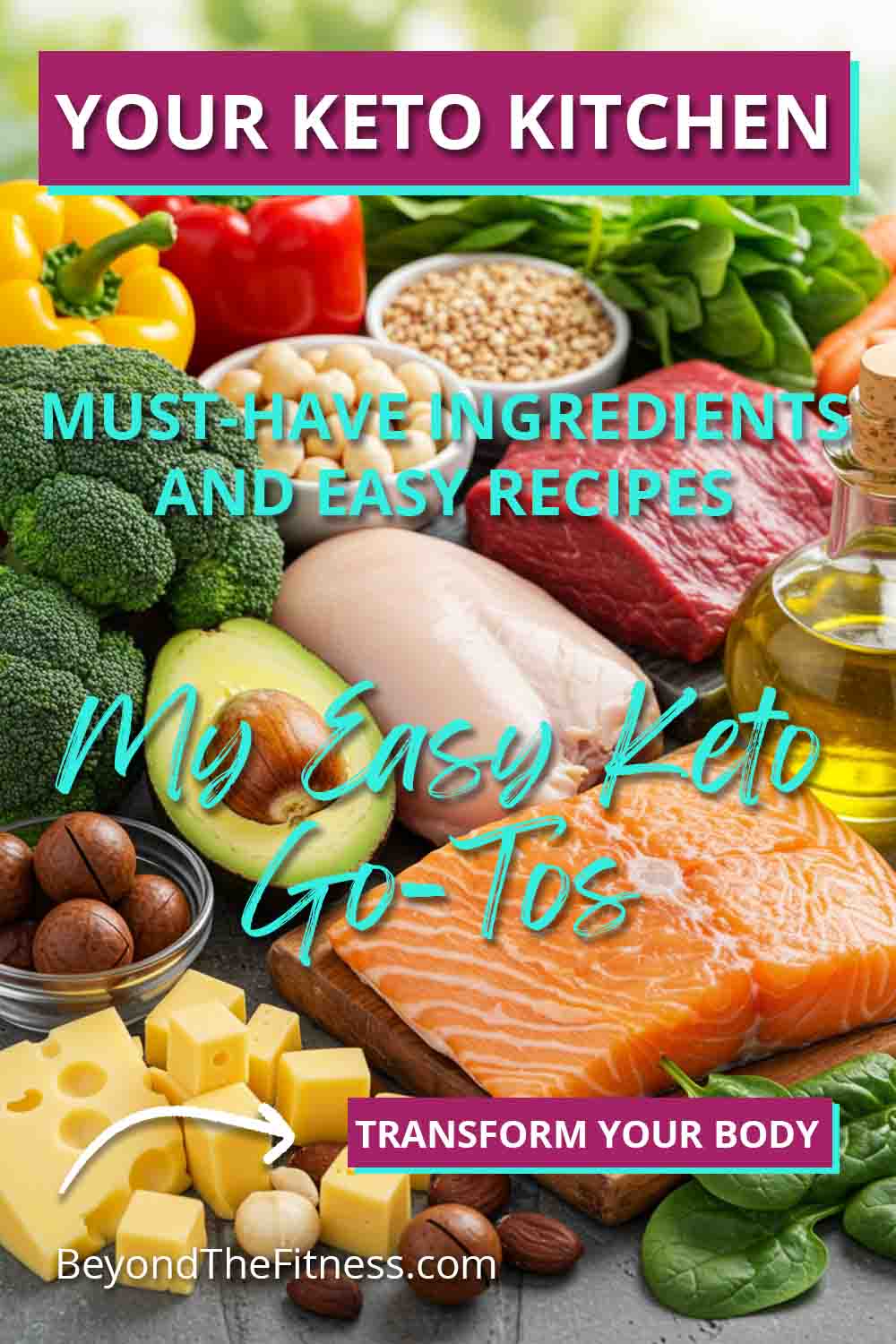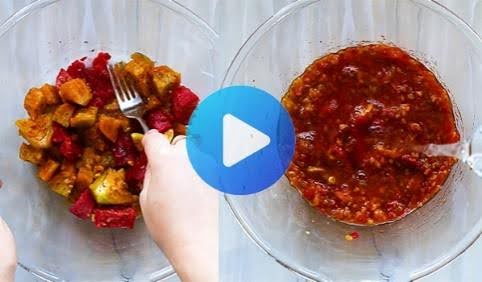Starting a new way of eating can feel like a big change. When people decide to try the ketogenic diet, often called keto, they sometimes wonder where to begin. I think the best place to start is your kitchen. Having the right foods on hand makes sticking to any plan much easier. Keto focuses on eating more healthy fats, a moderate amount of protein, and very few carbohydrates, or carbs. This shift helps your body learn to burn fat for energy instead of sugar from carbs. Many people find this helps with managing their weight and feeling more energetic throughout the day. For women especially, finding a sustainable way of eating that supports energy levels and health goals is really important. Let’s explore how to set up your kitchen for keto success.
Understanding Keto Simply
Before we stock the shelves, let’s quickly understand the main idea of keto. Imagine your body usually runs on gasoline, which is like carbs. The keto diet teaches your body to run on a different fuel, like clean-burning natural gas, which is fat. When you eat very few carbs, your body doesn’t have much sugar (glucose) for energy. So, it starts breaking down fats into molecules called ketones. These ketones become your new fuel source.
Why is this helpful? Burning fat for fuel can help with weight loss because your body starts using its stored fat. Many people also report feeling less hungry and having more stable energy levels without the ups and downs that sugar can cause. Protein is still important on keto. It helps you feel full and keeps your muscles strong, which is key when you’re managing your weight or exercising. We aim for moderate protein, not too much, not too little. Healthy fats are the star of the keto diet. They provide most of your energy and help you feel satisfied after meals.
For women, sometimes changing how we eat can affect our bodies in different ways. It’s always good to pay attention to how you feel and make sure you’re getting enough nutrients. Keto is not just about cutting carbs; it’s about choosing nutrient-rich foods within the keto framework.
Stocking Your Keto Pantry: The Essentials
Having the right ingredients makes cooking keto meals simple and enjoyable. You don’t need lots of fancy items. Here are the basics I recommend keeping in your kitchen.
Healthy Fats Are Your Friends
Fat is the main energy source on keto, so choosing good quality fats is key.
You Might Be Interested In: Delicious Keto Meals Tailored to Your Needs With Custom Keto Diet
- Avocado Oil: This is great for cooking at high heat, like searing meat or roasting vegetables. It has a mild flavor.
- Olive Oil (Extra Virgin): Best for low-heat cooking or drizzling on salads and cooked veggies. It has a lovely flavor and lots of health benefits.
- Coconut Oil: Good for medium-heat cooking and baking. It has a slight coconut flavor. Some people like it in coffee too.
- MCT Oil: This stands for medium-chain triglycerides. Your body can turn MCT oil into ketones very quickly, giving you a fast energy boost. It’s usually added to drinks like coffee or smoothies, not used for cooking. Start with a small amount, like a teaspoon, as too much can upset your stomach.
- Butter and Ghee: Butter adds great flavor to cooking. Ghee is clarified butter, meaning the milk solids have been removed. Ghee has a higher smoke point than butter, making it good for higher-heat cooking. Choose grass-fed butter if you can, as it has a better nutrient profile.
- Animal Fats: Tallow (beef fat) and lard (pork fat) can also be used for cooking and add rich flavor, especially if you enjoy traditional cooking methods.
These fats help you feel full, provide energy, and support overall health. Don’t be afraid of fat on keto; it’s essential.
Pick Your Proteins Wisely
Protein helps preserve muscle mass and keeps you feeling satisfied.
- Fatty Fish: Salmon, mackerel, sardines, and herring are excellent choices. They are rich in omega-3 fatty acids, which are great for heart and brain health. Aim for fish a couple of times a week.
- Poultry: Chicken (especially thighs and legs with skin) and turkey are versatile protein sources.
- Meat: Beef, pork, and lamb are good options. Choose fattier cuts sometimes, or add healthy fats during cooking. Grass-fed options often have more beneficial fats.
- Eggs: Eggs are a keto superstar. They are inexpensive, versatile, and packed with nutrients. Eat the whole egg; the yolk contains important fats and vitamins.
- Plant-Based Options: If you prefer plant-based proteins, tofu, tempeh, and certain low-carb protein powders can fit into a keto plan. Be mindful of the carb count in some processed plant-based products.
Aim for a palm-sized portion of protein at most meals.
Load Up on Low-Carb Veggies
Vegetables provide essential vitamins, minerals, and fiber. Fiber is important for digestion, especially when starting keto. Focus on vegetables that grow above ground.
- Leafy Greens: Spinach, kale, lettuce, Swiss chard. These are very low in carbs and high in nutrients. Use them raw in salads or cooked.
- Cruciferous Vegetables: Broccoli, cauliflower, Brussels sprouts, cabbage. These are versatile for roasting, steaming, or using in place of higher-carb foods (like cauliflower rice).
- Others: Zucchini, asparagus, bell peppers (green are lowest in carbs), mushrooms, green beans, celery, cucumbers.
These vegetables add color, texture, and nutrients to your meals without adding many carbs. A good goal is to fill half your plate with non-starchy vegetables.
Nuts and Seeds for Snacks and Texture
Nuts and seeds offer healthy fats, some protein, and fiber. However, carbs can add up quickly, so portion control is important.
- Low-Carb Nuts: Pecans, macadamia nuts, Brazil nuts, walnuts, almonds.
- Seeds: Chia seeds, flax seeds, pumpkin seeds (pepitas), sesame seeds, hemp seeds. Chia and flax seeds are great for adding fiber; you can add them to smoothies or make puddings.
- Nut Butters: Almond butter, peanut butter (check labels for no added sugar), macadamia nut butter. Stick to a tablespoon or two as a serving.
Measure out your portions instead of eating straight from the bag.
Dairy and Dairy Alternatives
If you tolerate dairy, full-fat options are best on keto.
- Cheese: Hard cheeses like cheddar, Swiss, mozzarella, and soft cheeses like cream cheese and goat cheese are generally low in carbs.
- Heavy Cream and Half-and-Half: Use in coffee, sauces, or recipes.
- Full-Fat Yogurt (Plain): Greek yogurt (plain, full-fat) can be okay in moderation, but check labels as carb counts vary.
- Unsweetened Nut Milks: Almond milk, coconut milk (the kind in a carton, unsweetened), and cashew milk are good low-carb alternatives to dairy milk. Always choose unsweetened versions.
Sweeteners (Use Sparingly)
While the goal is often to reduce reliance on sweet tastes, sometimes you might want a keto-friendly treat.
- Erythritol: A sugar alcohol that doesn’t impact blood sugar much.
- Stevia: A natural sweetener from the stevia plant.
- Monk Fruit: Another natural, zero-calorie sweetener.
Use these in moderation. They can help transition away from sugar but relying on them too much might keep sweet cravings alive.
Keto Flours for Baking
If you enjoy baking, you’ll need alternatives to regular flour.
- Almond Flour: Made from ground almonds. Great for cookies, cakes, and breading.
- Coconut Flour: Made from dried coconut meat. It’s very absorbent, so you usually need less of it compared to almond flour, and often more eggs or liquid.
These are staples for keto baking.
Spices, Herbs, and Flavorings
Flavor is key to enjoying your food.
- Salt: Essential on keto, as your body flushes out more electrolytes. Use sea salt or pink Himalayan salt.
- Pepper: Basic black pepper.
- Herbs: Dried or fresh herbs like basil, oregano, thyme, rosemary, cilantro, parsley add amazing flavor without carbs.
- Spices: Paprika, cumin, chili powder, garlic powder, onion powder, cinnamon, nutmeg. Stock your spice rack well.
- Broth/Stock: Chicken, beef, or vegetable broth (check for no added sugar) are great for soups, stews, or just sipping for electrolytes.
- Vinegars: Apple cider vinegar, red wine vinegar.
- Mustard and Hot Sauce: Check labels for added sugars, but many are keto-friendly.
- Sugar-Free Flavorings: Vanilla extract, almond extract.
Having a well-stocked pantry makes throwing together keto meals much less daunting.
Helpful Keto Kitchen Tools
You don’t need fancy gadgets, but a few tools can make keto cooking easier.
- Good Knives: Essential for chopping all those fresh veggies and proteins.
- Measuring Cups and Spoons: Important for tracking portions, especially with nuts, seeds, and keto flours.
- Food Scale: Very helpful for accuracy, especially when starting out, to understand portion sizes and track macros if you choose to do so.
- Blender: Great for making keto smoothies, sauces, or creamy soups. An immersion blender is also handy.
- Spiralizer: Fun for making zucchini noodles (zoodles) or other vegetable noodles as pasta substitutes.
- Baking Sheets: For roasting vegetables, baking fish or chicken, or making keto treats.
- Skillets: A good non-stick skillet and a cast-iron skillet are versatile for cooking eggs, meats, and veggies.
- Storage Containers: For meal prepping or storing leftovers. Glass containers are great because you can reheat food directly in them.
These tools support easy meal preparation and cooking.
Easy Keto Recipes to Get You Started
Now that your kitchen is ready, let’s make some simple and delicious keto meals. These recipes use many of the staple ingredients we just discussed.
Recipe 1: Simple Scrambled Eggs with Avocado
This is a classic keto breakfast, full of healthy fats and protein to start your day.
Ingredients:
- 2-3 large eggs
- 1 tablespoon butter or avocado oil
- Salt and pepper to taste
- 1/4 to 1/2 ripe avocado, sliced or diced
- Optional: 1 tablespoon heavy cream, chopped chives, or a sprinkle of cheese
Instructions:
- Crack the eggs into a bowl. Add salt, pepper, and heavy cream if using. Whisk well.
- Heat the butter or oil in a non-stick skillet over medium-low heat.
- Pour the eggs into the skillet. Let them set slightly around the edges.
- Gently push the cooked egg from the edges toward the center, tilting the pan so the uncooked egg flows underneath. Continue until the eggs are softly scrambled and cooked through but still moist. Avoid overcooking.
- Remove the skillet from the heat.
- Serve the scrambled eggs immediately, topped with the sliced or diced avocado. Add chives or cheese if desired.
This breakfast provides sustained energy without the carb crash.
Recipe 2: Keto Chicken Salad Lettuce Wraps
A quick and easy lunch option that’s refreshing and satisfying.
Introducing: Benefits of Custom Meal Plans With Keto Diet
Ingredients:
- 1 cup cooked chicken, shredded or diced (rotisserie chicken works well)
- 1/4 cup mayonnaise (check for sugar-free)
- 1 stalk celery, finely chopped
- 1 tablespoon chopped red onion or green onion (optional)
- 1 tablespoon chopped fresh dill or parsley (optional)
- Salt and pepper to taste
- Large lettuce leaves for wrapping (butter lettuce, romaine, or iceberg work well)
Instructions:
- In a medium bowl, combine the cooked chicken, mayonnaise, celery, onion (if using), and herbs (if using).
- Mix everything together until well combined.
- Taste and season with salt and pepper as needed.
- Wash and dry the lettuce leaves carefully.
- Spoon the chicken salad mixture into the center of each lettuce leaf.
- Fold or roll the lettuce leaves like a wrap or taco.
These wraps are light yet filling, perfect for a workday lunch.
Recipe 3: Baked Salmon with Roasted Asparagus
A simple, elegant dinner packed with healthy fats and nutrients.
Ingredients:
- 2 salmon fillets (about 4-6 oz each), skin on or off
- 1 bunch asparagus, tough ends trimmed
- 2 tablespoons olive oil or avocado oil, divided
- Salt and pepper to taste
- Optional: Lemon wedges, garlic powder, dried dill
Instructions:
- Preheat your oven to 400°F (200°C). Line a baking sheet with parchment paper for easy cleanup.
- Place the asparagus on one side of the baking sheet. Drizzle with 1 tablespoon of oil, salt, and pepper. Toss to coat. Spread them out in a single layer.
- Pat the salmon fillets dry with a paper towel. Place them on the other side of the baking sheet. Drizzle with the remaining 1 tablespoon of oil. Season with salt, pepper, garlic powder, and dill if using.
- Bake for 12-15 minutes, or until the salmon is cooked through (it should flake easily with a fork) and the asparagus is tender-crisp. Cooking time will vary depending on the thickness of the salmon.
- Serve immediately, with lemon wedges for squeezing over the salmon if desired.
This meal feels fancy but takes minimal effort.
Recipe 4: Zucchini Noodles with Pesto
Craving pasta? Zucchini noodles, or zoodles, are a great low-carb alternative.
Ingredients:
- 2 medium zucchini
- 1 tablespoon olive oil or avocado oil
- 2 cloves garlic, minced (optional)
- 1/4 cup pesto (store-bought or homemade, check for keto-friendly ingredients)
- Salt and pepper to taste
- Optional: Cherry tomatoes (halved), cooked shrimp or chicken, grated Parmesan cheese
Instructions:
- Use a spiralizer to turn the zucchini into noodles. If you don’t have a spiralizer, you can use a vegetable peeler to create wide ribbons, or simply slice the zucchini thinly.
- Pat the zucchini noodles dry with paper towels to remove excess moisture. This helps prevent them from becoming watery when cooked.
- Heat the oil in a large skillet over medium heat. Add the minced garlic (if using) and cook for about 30 seconds until fragrant.
- Add the zucchini noodles to the skillet. Cook, tossing frequently, for about 3-5 minutes until they are tender but still have a slight bite (al dente). Be careful not to overcook, or they will become mushy.
- Remove the skillet from the heat. Add the pesto, salt, and pepper. Toss gently to coat the noodles evenly.
- Serve immediately. Top with cherry tomatoes, cooked protein, or Parmesan cheese if desired.
A fresh and flavorful way to enjoy a pasta-like dish.
Recipe 5: Simple Keto Fat Bombs (Chocolate Coconut)
Fat bombs are small, high-fat snacks that can help you meet your fat goals and satisfy cravings.
Ingredients:
- 1/2 cup coconut oil, softened but not melted
- 1/4 cup unsweetened cocoa powder
- 2 tablespoons keto-friendly sweetener (like erythritol or stevia, adjust to taste)
- 1/4 cup unsweetened shredded coconut
- 1 teaspoon vanilla extract
- Pinch of salt
Instructions:
- In a medium bowl, combine the softened coconut oil, cocoa powder, sweetener, vanilla extract, and salt. Mix well until smooth. A hand mixer can be helpful here.
- Stir in the shredded coconut.
- Taste the mixture and adjust sweetener if needed.
- Drop spoonfuls of the mixture onto a baking sheet lined with parchment paper, or spoon into mini muffin liners or candy molds.
- Place the baking sheet or molds in the freezer for about 20-30 minutes, or until firm.
- Once firm, transfer the fat bombs to an airtight container and store them in the refrigerator or freezer.
Enjoy one or two as a quick energy boost or a treat.
Recipe 6: Basic Keto Green Smoothie
A fast and easy way to get in healthy fats, fiber, and nutrients.
Ingredients:
- 1 cup unsweetened almond milk or coconut milk
- 1/2 cup spinach or kale (fresh)
- 1/4 avocado
- 1 tablespoon chia seeds or flax seeds
- 1 scoop keto-friendly protein powder (optional, plain or vanilla)
- 1 tablespoon MCT oil or a spoonful of almond butter (optional, for extra fat)
- Ice cubes
Instructions:
- Combine all ingredients in a blender.
- Blend on high speed until smooth and creamy. Add more liquid if it’s too thick, or more ice if you prefer it colder.
- Pour into a glass and enjoy immediately.
This smoothie is a great grab-and-go breakfast or post-workout recovery drink.
Tips for Keto Meal Planning Success
Setting up your kitchen is the first step. Planning your meals helps you stay on track.
- Keep it Simple: Especially when starting, stick to easy recipes with few ingredients. You don’t need complex meals to be successful on keto.
- Plan Your Week: Take a little time each week to decide on your meals and snacks. Make a grocery list based on your plan.
- Meal Prep: Cook some components ahead of time. Roast a batch of vegetables, cook some chicken or hard-boil eggs, or mix up a batch of chicken salad. Having ready-to-go options makes busy days easier.
- Use Leftovers: Cook extra dinner and have the leftovers for lunch the next day.
- Stay Hydrated: Drink plenty of water throughout the day. Sometimes thirst can be mistaken for hunger. Adding electrolytes (sodium, potassium, magnesium) can also be helpful, especially early on.
- Listen to Your Body: Pay attention to your hunger and fullness cues. Keto often reduces appetite, so you might find you need smaller portions or fewer meals.
Keto and Your Fitness Goals
Many people wonder how keto affects exercise. Initially, as your body adapts to using fat for fuel, you might feel a dip in energy during intense workouts.
- Start Slow: If you’re new to keto, maybe focus on lower-intensity activities like walking, yoga, or light strength training for the first few weeks.
- Electrolytes Matter: Keto can cause your body to lose more electrolytes through urine. Low electrolytes can lead to fatigue or muscle cramps. Make sure you’re getting enough sodium, potassium (from avocados, leafy greens), and magnesium (from nuts, seeds, dark leafy greens, or supplements if needed). Adding salt to food and drinking broth can help.
- Fueling Workouts: Once adapted, many find they have steady energy for workouts. Some people take MCT oil before exercising for a quick energy boost. Listen to your body and adjust your food intake as needed based on your activity level.
- Muscle Health: Eating adequate protein is crucial to support muscle repair and growth, especially if you’re strength training.
Nutrition and exercise work together. Fueling your body properly with keto-friendly foods can support your fitness journey and weight management goals.
Special Considerations for Women on Keto
Women’s bodies can sometimes respond differently to dietary changes than men’s bodies due to hormonal fluctuations.
- Hormonal Health: Some women find keto helps regulate their cycles and improve conditions like PCOS, while others might experience temporary changes. It’s important to focus on nutrient-dense whole foods rather than just hitting macro targets with processed keto products. Ensure you’re getting enough healthy fats, which are building blocks for hormones.
- Nutrient Needs: Pay attention to getting enough iron (from red meat, spinach), calcium (from dairy, leafy greens, sardines), and folate (from leafy greens, avocado, asparagus).
- Listen to Your Body: This is key. If something feels off, don’t push through relentlessly. Maybe you need slightly more carbs from vegetables, or perhaps more calories overall. It’s okay to adjust.
- Consult a Professional: If you have underlying health conditions, are pregnant or breastfeeding, or have concerns about how keto might affect you, it’s always best to talk with a doctor or a registered dietitian knowledgeable about low-carb diets.
Keto can be a great tool for many women seeking better health and weight management, but individual experiences vary. Focus on sustainable habits and whole foods.
Dealing with the “Keto Flu”
When you first cut carbs drastically, your body goes through an adaptation period. Some people experience temporary side effects often called the “keto flu.” Symptoms might include headache, fatigue, brain fog, irritability, or nausea. This usually happens in the first week and is mainly due to dehydration and electrolyte imbalance as your body adjusts.
- Hydrate: Drink lots of water.
- Get Electrolytes: Add salt to your food, drink bone broth, eat potassium-rich foods (like avocado and spinach), and consider a magnesium supplement if needed.
- Be Patient: These symptoms are usually temporary and pass within a few days to a week as your body becomes keto-adapted.
- Eat Enough Fat: Make sure you’re eating enough healthy fats to give your body fuel.
Don’t let the possibility of keto flu discourage you; being prepared with hydration and electrolytes makes a big difference.
Setting up your kitchen is a powerful step towards making the ketogenic lifestyle work for you. By stocking up on essential ingredients and trying out simple, delicious recipes, you create an environment that supports your health goals. Remember that consistency and focusing on whole, nutrient-dense foods are key. Enjoy the journey of discovering tasty new meals and how this way of eating makes you feel.
Related YouTube Video
Final Thoughts
Embarking on a keto journey starts in your kitchen. By understanding the basics and stocking up on the right foods – plenty of healthy fats, moderate protein, and lots of low-carb vegetables – you set yourself up for success. Trying simple recipes helps build confidence and shows you that keto food can be delicious and satisfying. Remember to listen to your body, stay hydrated, and focus on whole foods. This approach isn’t just about changing what you eat; it’s about creating sustainable habits that support your overall well-being and fitness goals. Be patient with yourself, enjoy the process of learning and cooking, and celebrate the positive changes you experience along the way.







